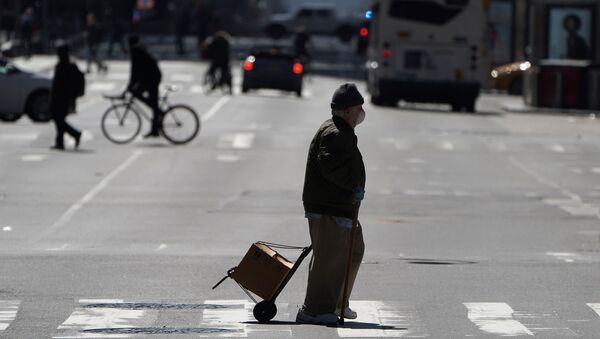The company has created a “US Health Weather Map,” which is a “visualization of seasonal illness linked to fever - specifically influenza-like illness.” The map tracks such illnesses using Kinsa thermometers, which are smart thermometers that upload users’ temperature readings to a database, allowing the company to determine the number of people with fevers across the US.
According to the US Centers for Disease Control and Prevention (CDC), COVID-19 symptoms include fever, cough and shortness of breath. Emergency warning signs of the infection include “trouble breathing, persistent pain or pressure in the chest, new confusion or inability to arouse and bluish lips or face."
To identify potential clusters of COVID-19 infections, Kinsa altered its software so that it could detect “atypical fevers” that do not coincide with historial flu patterns and are more likely associated with the coronavirus. According to Kinsa’s map, the numbers of such fevers across the country are currently either staying the same or decreasing.
In an update on its website on March 24, Kinsa wrote, “Due to widespread social distancing, school closures, stay-at-home orders, etc. feverish illness levels are dropping in many regions.”
“This does not mean that COVID-19 cases are declining. In fact, we expect to see reported cases continue to surge in the near term, but it may indicate these measures are starting to slow the spread,” the statement adds. By Tuesday, more than 75% of the country was shaded a deep blue on the map, which means that the numbers of fever cases were decreasing rapidly in those areas.
“I’m very impressed by this,” Dr. William Schaffner, a preventive medicine expert at Vanderbilt University, told the New York Times, commenting on Kinsa’s map. “It looks like a way to prove that social distancing works.”
“But it does shows that it takes the most restrictive measures to make a real difference,” he added.
According to Kinsa, US cities hit hard by the coronavirus did not experience a decrease in the number of people reporting fevers when such areas declared states of emergency or limited the size of public gatherings. What did, however, result in a sizable decrease in people reporting fevers was closing down bars and restaurants and asking people to stay in their homes.
“People need to know their sacrifices are helping,” Inder Singh, founder of Kinsa, told the New York Times. “I’ve had friends text or call and say: ‘Inder, this seems overblown. I’m sitting at home by myself, I don’t know anyone who’s sick, why am I doing this?’”
According to the New York Times, at least 248 million Americans in at least 29 states have been ordered to stay home.
The latest data from Worldometer reveals that there are more than 185,000 cases of the coronavirus in the US, and almost 4,000 people have died as a result.



